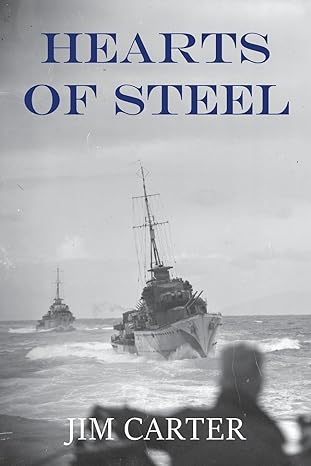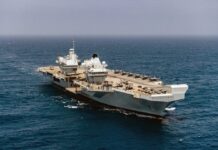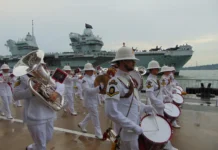
Hearts of Steel. By Jim Carter. New Generation Publishing, 2022. ISBN. Paperback 978-1-80369-631-7. Hardback 978-1-80369-632-4. eBook 978-1-80369-633-1
Reviewed by David Hobbs
Jim Carter was a flat-race jockey who achieved success in the UK, New Zealand and France before becoming director of his family business, WebWay Ltd, which specialised in data communications for the fire and security industry. Now retired, he has developed an interest in history and the idea for this book came to him after 2014 when he became involved in a project to find out about the men from his village who had died in the First World War.
A more specialised study followed when his mother gave him a four page document outlining the career of his great grandfather, Able Seaman Herbert Leeder, who had served in the Royal Navy between 1918 and 1945. Whilst he found little more specific detail about his relative’s career, it occurred to him that he could put together the story by researching and making use of experiences written or spoken by men who had served in the relevant ships at the same time as Leeder. These included the cruisers Effingham on the East Indies Station and Hawkins on the China Station before he joined the new Tribal class destroyer Nubian when she commissioned in early 1939. She was awarded thirteen battle honours for service in the Second World War, counting three Mediterranean citations as one; only the battleship Warspite had more with fourteen. Leeder finally left her in 1941when her stern was blown off by a German bomb.
Carter makes use of a wide range of secondary sources, listed in a five page bibliography, including biographies and books written to commemorate individual ships’ commissions which, taken together, give a very clear idea of the events in which his great grandfather would have been involved. The book is written in a very readable and enjoyable style that captures the reader’s imagination and gives insight into both peacetime naval deployments east of Suez and the actions against desperate odds in which Nubian was intimately involved. She took part in the ill-fated Norwegian campaign in 1940 and subsequently served in the Mediterranean alongside HMA Ships Sydney, Perth and the V & W class destroyers of the ‘Scrap-Iron Flotilla’. Interestingly, he uses accounts written by enemy pilots and others to give an account of events from differing perspectives and Carter certainly achieves his aim of adding colour to bare historical accounts of sea warfare.
However, I must point out that the author’s lack of detailed naval knowledge lets him down on occasion and there are some annoying errors. Typical of these is his mistaken mention of Illustrious having a steam catapult in 1941 on page 345; the first RN carrier with a steam catapult was Ark Royal in 1955. Even more annoying were the errors in which he mistakenly gives RN Petty Officer pilots RAF ranks when he refers to them as Pilot Officers. An example is the reference to ‘Pilot Officer Ben Rice’ on pages 395 and 396: the man he was referring to was Petty Officer Airman Frederick Charles Rice, FAA/FX 76512, Warspite’s Swordfish pilot who was awarded a DSM for his actions in the Second battle of Narvik and an MID for those in the Battle of Matapan. Carter should have known better because his own glossary on page 515 states that PO is short for Petty Officer. There is another error on page 399 where he states that Lieutenant Commander A S Bolt RN, Warspite’s Swordfish observer, was awarded a DSM for his actions in the Battle of Matapan. The DSM was a gallantry medal awarded to ratings; Bolt was actually awarded a bar to his DSC for Matapan. I could go on and mention the occasional misuse of apostrophes and the fact that on page 430 he is referring to an Admiralty Fire Control Clock, AFCC, not an advanced fire control clock but these are minor niggles in a otherwise very commendable effort to bring the memory of the navy in which his great grandfather served to a contemporary readership. Hopefully, if there is a second edition, these errors can be easily corrected.
Overall I enjoyed reading this account which describes many operations including the Attack on Taranto by Swordfish from Illustrious and several notable offensive actions by Nubian against Axis convoys. Those who served in the RAN ships that formed part of the Mediterranean Fleet would find much in common with the account Jim Carter has crafted. Notwithstanding those annoying errors, this book captures the feelings of those on board during some of the darkest moments of the Second World War and I recommend it.


